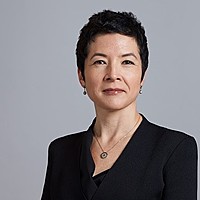Introduction to the WAM Alternative Assets Megatrends Series
.jpg)
The WAM Alternative Assets Megatrends Series explores the long-term megatrends that the WAM Alternative Assets (ASX: WMA) portfolio can access through investing in alternative asset classes. Join Portfolio Manager Dania Zinurova as she delves into the strategies and opportunities available to WAM Alternative Assets investors.
- WAM Alternative Assets’ investment philosophy is based on thematic investing, identifying long-term megatrends with strong tailwinds that can be accessed through investing in alternative asset classes.
- WAM Alternative Assets focuses on four key megatrends: digitalisation, demographical shifts and ageing populations, climate change and the increasing demand for food.
Dania Zinurova: WAM Alternative Assets’ investment philosophy is based on thematic investing. We identify long-term megatrends with strong tailwinds which we can access through investing in alternative asset classes.
Megatrends are defined as macroeconomic changes seen on a global scale that will transform economies, businesses and societies. WAM Alternative Assets focuses on four key megatrends, and while we see them as long-term themes that we will follow over the next decade, the speed of change and disruption across sectors may bring more themes and further opportunities. This means that our thematic investing is a live philosophy that will evolve together with change in megatrends.
Digitalisation or technological advances has meant that technology is everywhere now. It is impossible to ignore this trend as it is advancing at a high speed. It affects all aspects of our economy and society, and it is a fairly broad trend that spans from artificial intelligence, automation, financial technology, biotechnology, cyber security and digitalisation.
When we talk about demographical shifts and ageing populations we think about ageing populations that are growing globally. Declining fertility rate is also part of this megatrend. Our society is going through some major demographical shifts that impact consumer habits, level of income, economic growth, our saving habits, public sector debt levels and other areas.
Another big theme is climate change, and this means that long-term climatic shifts such as acute weather events including bushfires, hurricanes and droughts, and gradual, albeit an unstoppable global move away from carbon based energy products. These factors will impact asset values over the long term.
Finally, increasing demand for food. This trend has been observed for a while now. Demand for food has increased on the back of a growing global population. Combined with our changing consumption habits and shift towards to healthier lifestyles in particular in developed markets has made it an interesting trend to explore. Over the next few videos in our WAM Alternative Assets education series, I will go into more details on each of these megatrends and talk about how they translate into current investment opportunities within our portfolio and how it will drive our future investments in alternative asset classes.
.jpg)